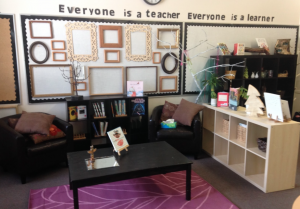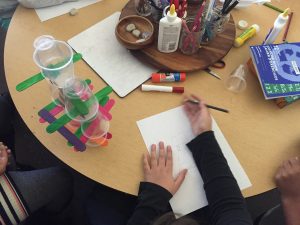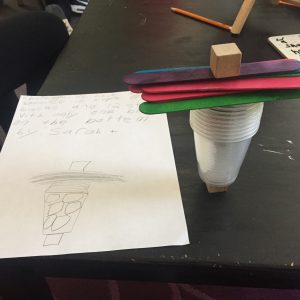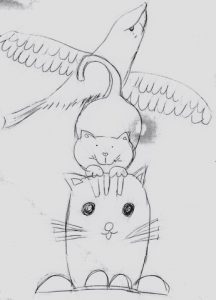I noticed the bulbs on the table when I walked into the classroom this morning. This class had changed their weekly project into a new inquiry, which was seeds and gardening. There were magnifying glasses and flashlights beside the bowl of bulbs for students to observe. As part of the project, students were required to complete a chat with three columns which were “I see”, I” think”, and “I wonder”. Then, students needed to put their observations and questions into a short paragraph and decorated it with a drawing. Student would have the opportunity to plant the bulbs and solve their wonders later (are they alive/ dead; what plant is it; what color would its flower be etc.) through actions.

This project really interested me because it focused on students’ thinking process and reminded me of the idea of metacognition. Teacher was guiding students to think about students’ own thinking, to realize what students have already known with their funds of knowledge, to see what they are capable of doing themselves, and to reflect on their own curiosities. Moreover, this project went from the classroom setting to school setting, and even to communities and families. It allowed students to leave their classroom and plant things in their school/ community area. Their little plants might have the opportunity to contribute and be part of the community, and present student’s results available for everyone to share in this environment.
Another project that students worked on earlier in the week is a self-portrait. Students watched an video on how to draw a self- portrait and used a mirror to create one for themselves. The main focus was to notice the facial details, such as the the angle of the eye brow and the mouth with different emotions, and students practiced on the accuracy of their drawings through the activity. This project would help students to notice details, and this is critical because it is a major foundation for self awareness. It helps establish the ability to accurately recognize one’s own emotions. This will also prepare students for relationship skills, such as communications and relationship-building, and many other things.
There were many other small details in the classroom showed the SEL language. For example, the picture books that focus on emotions and the warm welcoming sign on the table. I could see that the teacher really valued the SEL language in this classroom.






